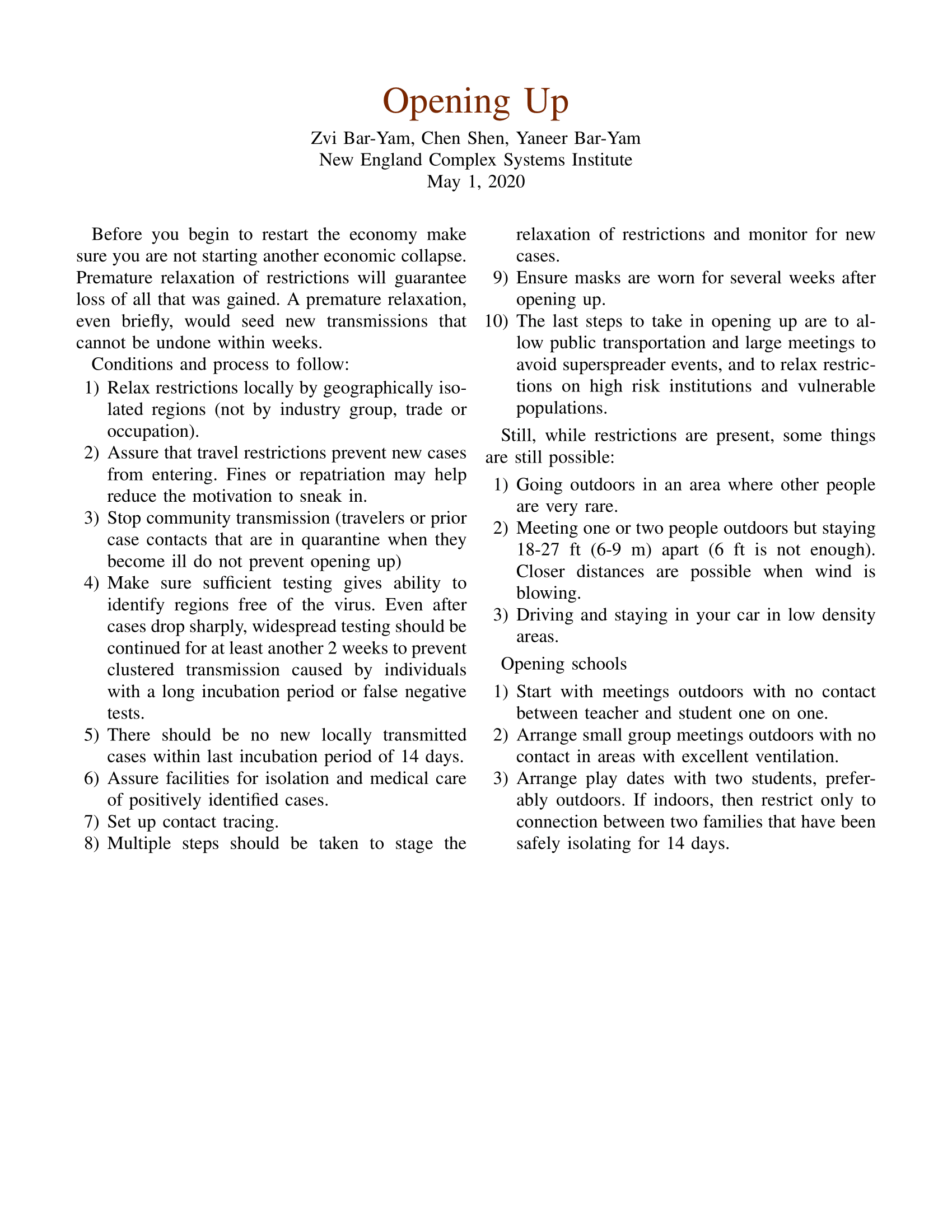Opening up
Zvi Bar-Yam, Chen Shen, Yaneer Bar-Yam
New England Complex Systems Institute
May 1, 2020
Before you begin to restart the economy make sure you are not starting another economic collapse. Premature relaxation of restrictions will guarantee loss of all that was gained. A premature relaxation, even briefly, would seed new transmissions that cannot be undone within weeks.
Conditions and process to follow:
1) Relax restrictions locally by geographically isolated regions (not by industry group, trade or occupation).
2) Assure that travel restrictions prevent new cases from entering. Fines or repatriation may help reduce the motivation to sneak in.
3) Stop community transmission (travelers or prior case contacts that are in quarantine when they become ill do not prevent opening up)
4) Make sure sufficient testing gives ability to identify regions free of the virus. Even after cases drop sharply, widespread testing should be continued for at least another 2 weeks to prevent clustered transmission caused by individuals with a long incubation period or false negative tests.
5) There should be no new locally transmitted cases within last incubation period of 14 days.
6) Assure facilities for isolation and medical care of positively identified cases.
7) Set up contact tracing.
8) Multiple steps should be taken to stage the relaxation of restrictions and monitor for new cases.
9) Ensure masks are worn for several weeks after opening up.
10) The last steps to take in opening up are to allow public transportation and large meetings to avoid superspreader events, and to relax restrictions on high risk institutions and vulnerable populations.
Still, while restrictions are present, some things are still possible:
1) Going outdoors in an area where other people are very rare.
2) Meeting one or two people outdoors but staying 18-27 ft (6-9 m) apart (6 ft is not enough). Closer distances are possible when wind is blowing.
3) Driving and staying in your car in low density areas.
Opening schools
1) Start with meetings outdoors with no contact between teacher and student one on one.
2) Arrange small group meetings outdoors with no contact in areas with excellent ventilation.
3) Arrange play dates with two students, preferably outdoors. If indoors, then restrict only to connection between two families that have been safely isolating for 14 days.

